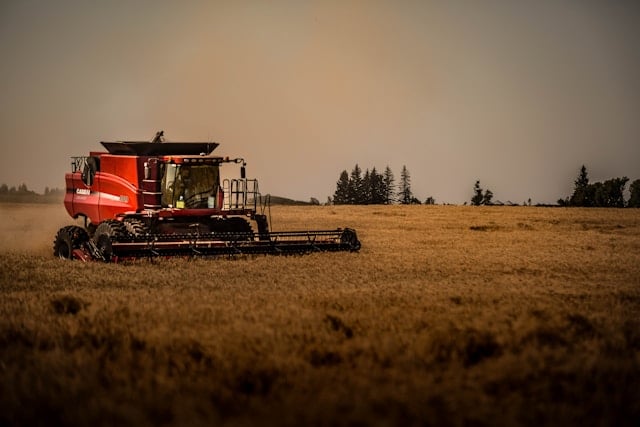What Are the Potential Benefits of Multi-Story Agricultural Developments in Urban Centers?

The marriage between cities and agriculture may seem unlikely. However, as urban spaces expand and arable land shrinks, a new type of farming is taking root in urban centers worldwide. This emerging trend is not merely about cultivating patches of greens in the midst of concrete jungles, but going vertical, creating multi-story farms in the heart of cities. In this article, we delve into the promising benefits of these innovative multi-story agricultural developments in our bustling urban landscapes.
The Emergence of Urban Agriculture
Urban agriculture is not a new concept. People have been growing food in cities for generations, but the practice has gained significant traction in recent years. This is due to concerns about sustainability, local production, and the food system.
Sujet a lire : Boostez vos revenus avec une gestion locative efficace
Increased urbanization has led to a disconnect between people and the food system. Much of the food in cities is transported from rural areas, leading to food insecurity, high costs, and carbon footprints. Urban agriculture, especially vertical farming, is emerging as a viable solution to these problems.
Vertical farming is a method of farming where crops are grown in vertically stacked layers, often in buildings or skyscrapers. This innovative approach to agriculture makes use of underutilized city spaces and can be implemented in various areas, such as rooftops, abandoned buildings, and even underground tunnels.
A lire également : What Are the Implications of Noise Regulations on Urban Construction Projects?
Rethinking Food Production and Distribution
The traditional food production system has often been criticized for its inefficiency and unsustainability. Transporting food across long distances results in significant carbon emissions, and the quality of the food can also degrade during transit.
Through urban vertical farming, food can be produced locally, reducing the need for transportation and ensuring fresher, healthier products. It also bolsters the local economy by creating jobs and stimulating local business.
Moreover, this type of agriculture could increase food security in cities, where access to fresh, affordable produce is often limited. By growing food locally, urban farms can contribute to a more resilient local food system, where the community becomes less reliant on imports and is better equipped to withstand supply chain disruptions.
The Role of Water and Sustainable Practices
One of the significant advantages of vertical farming is its efficient use of water. Traditional farming methods can be highly water-intensive, but vertical farms can utilize hydroponic systems that use up to 90% less water.
These farms can also incorporate sustainable practices such as rainwater harvesting, greywater recycling, and the use of renewable energy sources for lighting and temperature control. This not only reduces the environmental impact of these farms, but also makes them more cost-effective in the long run.
Community Building and Greening Cities
Urban agriculture is more than just growing food; it’s about building communities and greening our cities. Urban farms can become community hubs, where people come together to grow, learn, and share. They foster a sense of community ownership and engagement, improving the social fabric of neighborhoods.
Moreover, urban farms contribute to greening cities, increasing biodiversity, and improving air quality. They can also reduce the urban heat island effect, a phenomenon where urban areas are significantly warmer than their rural surroundings due to human activities.
The Future of Urban Agriculture
The potential of urban agriculture is vast. As cities continue to grow, so will the demand for sustainable, local food production methods. Vertical farms could play a significant role in the future of urban development, making cities more resilient, sustainable, and livable.
Despite potential challenges such as initial start-up costs and the need for specialized knowledge, the benefits of urban vertical farming are promising. They present an opportunity to rethink our food system, to reconnect with the source of our food and to make our cities greener and more sustainable.
The Intersection of Urban Agriculture and Climate Action
Climate action is an essential aspect of sustainable urban development. As global warming continues to intensify, cities are facing increasing pressure to incorporate climate action into their strategies. Here, urban agriculture, particularly vertical farming, can play a pivotal role.
By reducing the need for transportation, urban farms can significantly decrease the carbon footprint associated with food production. According to a study by Google Scholar, locally produced food in urban areas can reduce emissions by up to 20% compared to food transported from rural areas. Vertical farms, with their ability to produce food year-round, regardless of weather conditions, can further contribute to this reduction.
Moreover, vertical farms can act as carbon sinks, absorbing carbon dioxide and releasing oxygen, thereby mitigating the effects of greenhouse gases. The incorporation of renewable energy sources like solar or wind power can further enhance the sustainability of these farms.
From a climate resilience perspective, vertical farms can provide a more reliable food source in the face of climate change-induced weather events. This contributes to food security by ensuring a consistent supply of fresh produce, regardless of external climate conditions.
Urban Agriculture and Social Cohesion
Urban farming is not solely about producing food; it also carries profound social implications. In dense urban centers where space is a premium, community gardens can function as rare public spaces that foster social interaction and community building.
These community gardens often stimulate local engagement, with residents participating in planting, harvesting, and community events. They serve as platforms for education about healthy eating and sustainable living, thereby promoting greater awareness and personal investment in food systems.
Moreover, urban farmers can develop a shared sense of purpose and pride, strengthening the fabric of urban neighborhoods. The role of urban agriculture in promoting social cohesion is recognized by many scholars, with numerous articles available on Google Scholar and PDF accessed resources highlighting these benefits.
In Conclusion: Transforming Urban Landscapes
Urban agriculture, particularly vertical farming, offers a compelling solution to several pressing urban challenges, from food security to climate action to social cohesion. The innovative use of urban space for food production can reshape our cities, making them more sustainable, resilient, and livable.
Despite potential hurdles such as high initial start-up costs and the requirement for specialized knowledge, the long-term benefits of urban agriculture are hard to ignore. The potential for growth and expansion of vertical farms and other forms of urban farming is enormous, given the right investments and policies.
As we look towards the future, it’s clear that the marriage between cities and agriculture is not just feasible but necessary. This intersection could redefine our urban landscapes and food systems, making them more in tune with the needs of people and the planet. As urban dwellers, it’s our shared responsibility to support this transformation, reap its benefits, and contribute to a greener, more sustainable future.
